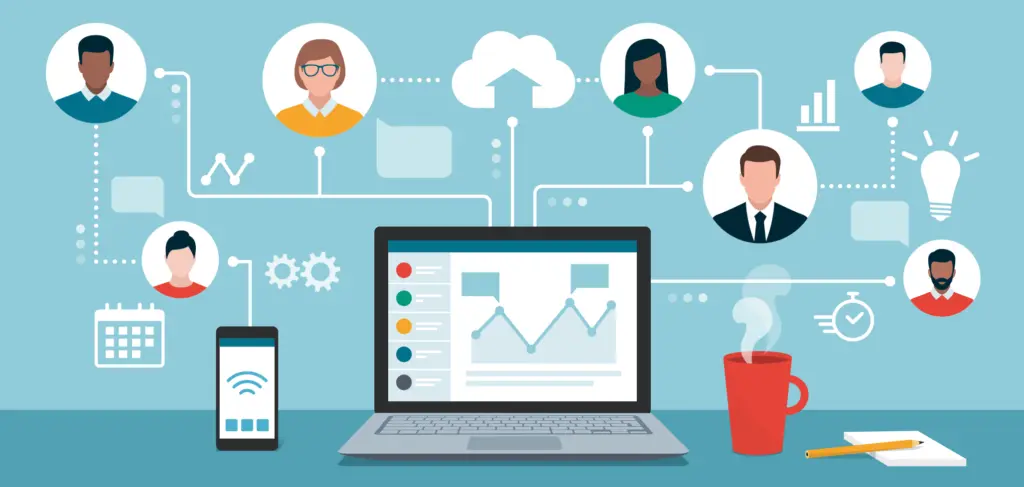Modern Employee Induction Practices for the Remote Work Era

The landscape of work has undergone seismic shifts in recent years, with remote work transforming how companies operate across the globe. This evolution has necessitated a corresponding change in the way new hires are integrated into their roles—modern employee induction. This article delves into the transformative practices of modern employee induction, exploring how they have adapted to the challenges and opportunities of remote work.
Table of Contents
The Evolution of Employee Induction
Employee induction, traditionally a day of tours and handshakes, has transitioned into a comprehensive digital experience that accommodates the nuances of remote work. This section explores the key components that have shaped modern employee induction practices.
Transition to Digital Platforms
- Virtual Onboarding Tools: Utilization of platforms like Zoom, Microsoft Teams, and specialized HR software for virtual introductions and training.
- Digital Welcome Packs: Provision of digital resources and essential documents through cloud-based services.
Enhanced Focus on Cultural Integration
- Virtual Meetups: Encouraging cultural assimilation through online team-building activities and informal meet-and-greets.
- Interactive Q&A Sessions: Live sessions with new hires to address queries about the company culture and expectations.
Key Features of Modern Employee Induction Programs
Modern employee induction programs are intricately designed to welcome new hires into a company in a manner that is both efficient and enriching, especially as remote work becomes more prevalent. These programs aim to provide a comprehensive introduction to the company’s operations, culture, and expectations while ensuring new employees feel connected and supported from the start. Here’s an in-depth look at the essential features of these programs:

Tailored Digital Onboarding Portals
- Customized Welcome Experience: Using onboarding portals that offer personalized greetings, schedules, and essential resources tailored to the individual’s role.
- Interactive Platforms: Integration of interactive elements such as quizzes and virtual reality tours to make the learning process engaging and memorable.
- Documentation Hub: Centralized location for all onboarding documents, including policies, procedures, and job-related resources, accessible anytime and from any device.
Structured Learning Modules
- Role-Specific Training: Online modules designed to outline the specific responsibilities and daily tasks of the role, supplemented with virtual walkthroughs by team leaders or mentors.
- Compliance Training: Essential for acquainting new hires with legal and ethical guidelines relevant to their roles and the company at large, delivered through engaging digital content.
- Skill Development Workshops: Scheduled online workshops focusing on both hard and soft skills development to ensure new employees are well-prepared for their roles.
Continuous Support and Feedback
- Instant Feedback Tools: Immediate feedback mechanisms, such as digital surveys and quick response tools embedded within training modules, to adapt and improve the induction process in real-time.
- Dedicated Support Channels: Establishment of dedicated chat groups or forums where new hires can ask questions and receive prompt answers, helping to reduce any feelings of isolation.
- Regular Check-Ins: Scheduled virtual meetings with HR and direct supervisors to discuss progress, address any concerns, and help integrate new hires into their teams effectively.
Cultural Immersion Activities
- Virtual Team Introductions: Video introductions from team members and virtual meet-and-greets to foster personal connections and team spirit.
- Cultural Narratives: Sharing of company success stories, history, and core values through rich media content, such as videos and interactive timelines.
- Social Integration Events: Online social events such as virtual coffee breaks, team lunches, or after-hours hangouts to simulate the informal social interactions of physical workplaces.
Performance and Progress Tracking
- Milestone Markers: Setting clear milestones within the induction period to help new hires gauge their progress and adjust their learning pace.
- Performance Analytics: Use of advanced analytics to track engagement and performance in training modules, providing insights to both the employee and management on areas of strength and improvement.
- Goal-Oriented Tasks: Assignments and projects given early in the induction process to align new hires with the company’s operational goals and assess their application of training in real work scenarios.
Enhancing the Onboarding Experience
These features underscore a shift towards a more dynamic and user-centric approach to employee induction, which is necessary in today’s digital-first workplace environment. By effectively leveraging technology, companies can create a seamless and inclusive onboarding experience that not only prepares new hires for their roles but also integrates them into the company culture, irrespective of geographical barriers. Modern employee induction programs are essential for building a resilient and adaptive workforce ready to meet the challenges of a rapidly changing business landscape.

Comprehensive Digital Preparation
- Pre-boarding Activities: Engaging employees with preparatory tasks and information before their official start date.
- Automated Workflow: Using software to streamline the induction process, ensuring all administrative tasks are completed efficiently.
Continuous Support and Engagement
- Ongoing Training and Development: Regularly scheduled training sessions to update skills and knowledge.
- Mentorship Programs: Pairing new hires with experienced employees to foster support and guidance.
Integration into Company Culture
- Virtual Office Tours: Utilizing virtual reality or video to introduce new hires to office environments.
- Values and Ethics Workshops: Online workshops to align new hires with the company’s core values and ethical practices.
The Impact of Remote Work on Employee Induction
Remote work has significantly influenced how induction programs are structured, making flexibility and technology key components.
Benefits of Modern Inductions
- Scalability: Ability to onboard multiple employees simultaneously, regardless of their geographic location.
- Accessibility: Provides the same resources to all employees, ensuring a uniform experience.
- Efficiency: Reduces the time and cost associated with traditional induction methods.
Challenges and Solutions
- Building Team Cohesion: Overcoming the need for physical presence with regular virtual team activities.
- Technology Dependence: Ensuring all employees have access to necessary technology and support to engage with digital tools.
FAQs:
Q1: How can companies ensure effective communication during remote inductions? To ensure understanding and engagement, Utilize precise, concise communication tools and regular check-ins.
Q2: What are the best practices for introducing company culture remotely? To convey company culture, Share stories, and testimonials from current employees and host virtual coffee chats or happy hours.
Q3: Can digital inductions fully replace in-person orientation? : While digital inductions offer many benefits, some companies may choose a hybrid approach to maintain personal connections.
Conclusion:
As remote work continues to define the modern workplace, employee induction programs must evolve to meet new demands. By embracing technology and prioritizing engagement and cultural integration, companies can ensure that their induction programs prepare new hires for success, regardless of location. Modern employee induction is not just about adapting to changes; it’s about seizing opportunities to innovate and improve the onboarding process for a globally dispersed workforce.






